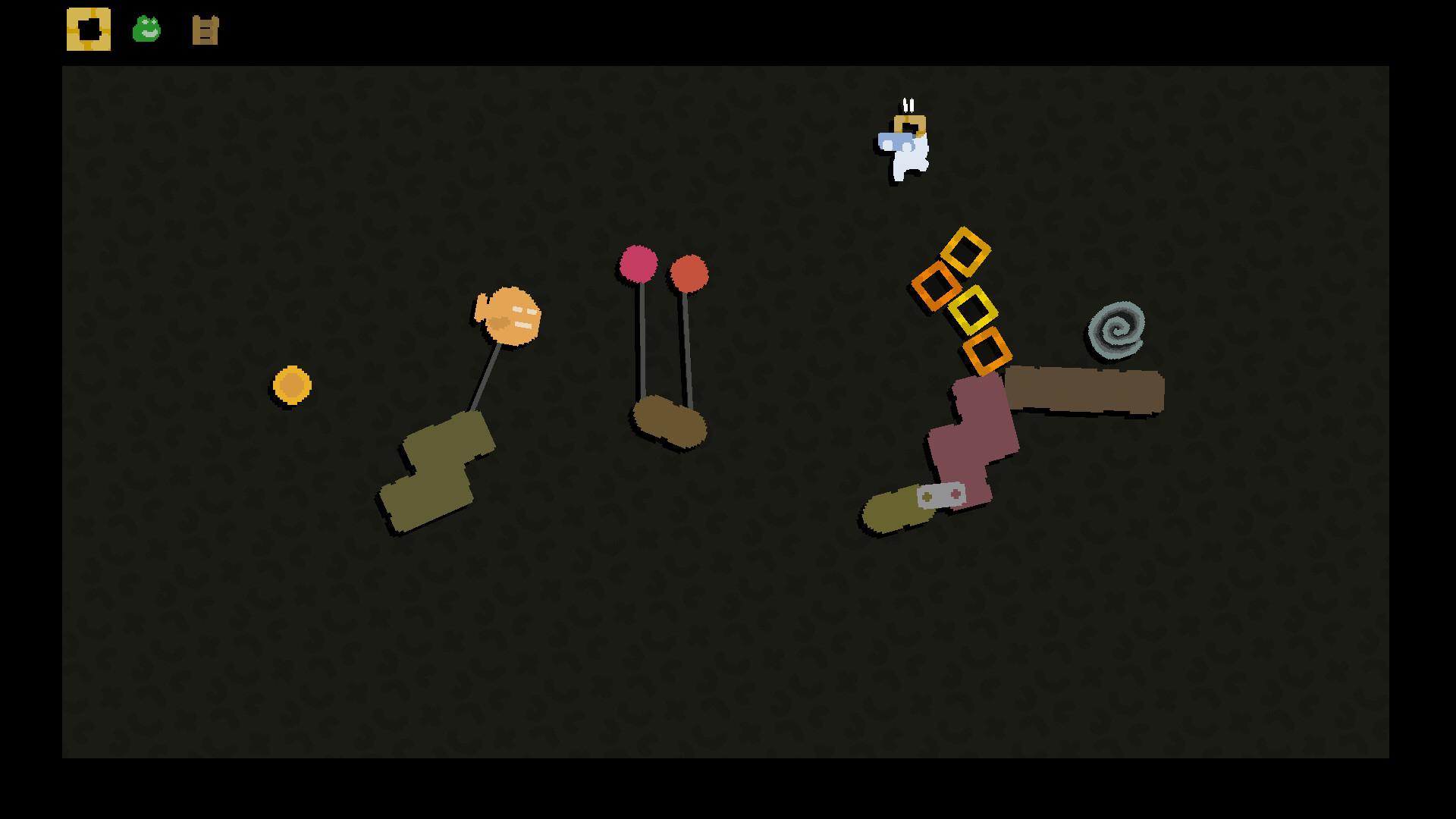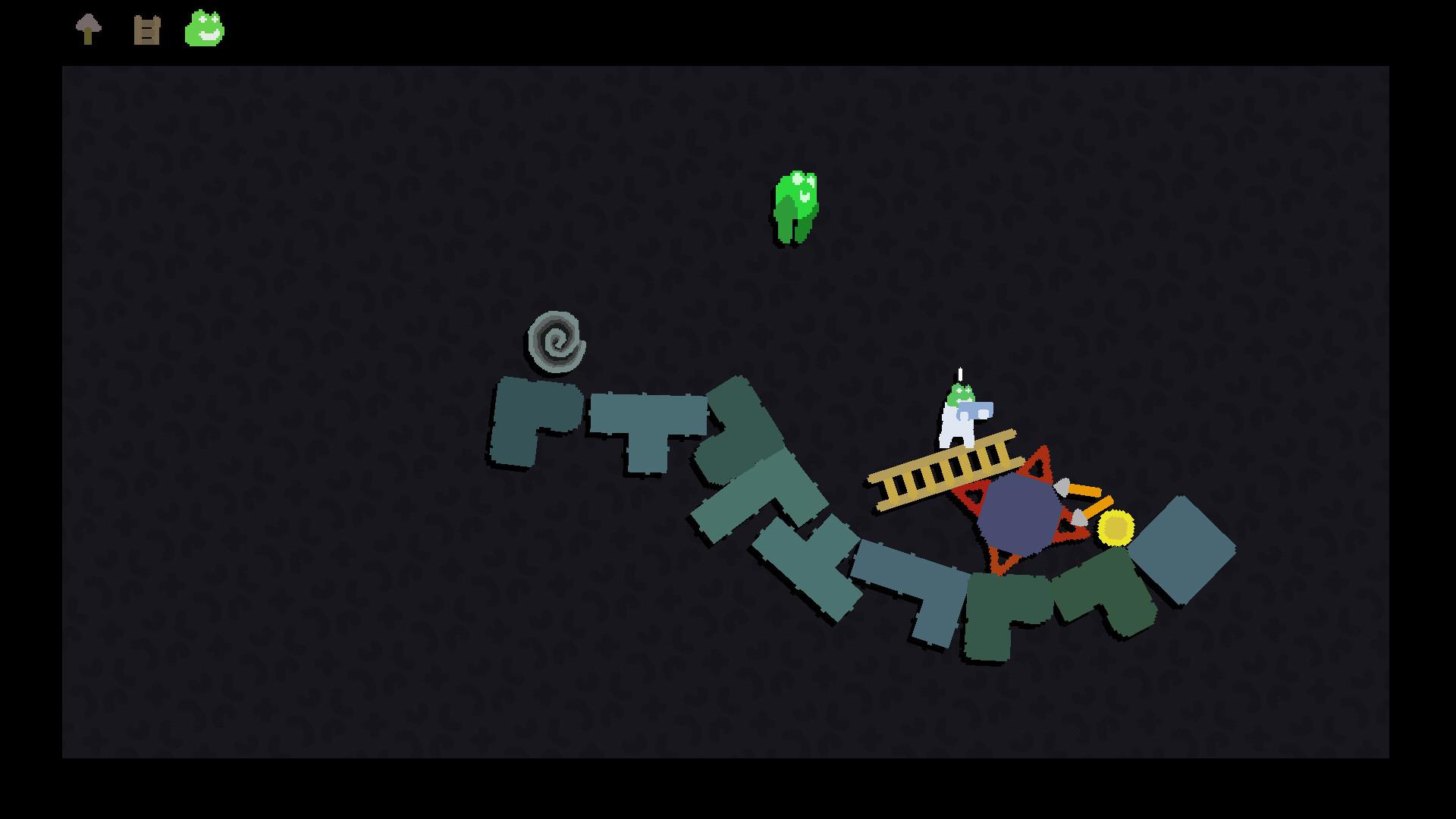Mosa Lina is a puzzle game in which there are absolutely NO intended solutions to any of the puzzles presented to the player. Unlike other games in which the player is trying to outsmart the game designer’s that made the puzzle, players of Mosa Lina are trying to outsmart the game itself. Mosa Lina’s truly, purely random setups force the player to break out of any puzzle-solving patterns they may have, to think outside of the box (although for this game, there is no box to begin with), and attempt to “break” the game as they attempt to win.

First, the levels. When a new game is started, nine levels are chosen at random. There are a LOT of levels for the game to pull from, so the odds of a repeated level only really come into play after several dozens of hours of play. On top of that, when a level is chosen, the location of the starting and exit portal, the location of the collectible fruits, and the location of some blocks are randomized as well. This reinforces the idea of a random setup which prevents the player from memorizing potential solutions.
Second, the tools. When a new game is started nine tools are chosen at random, and these are the ONLY tools that the player will be able to use as they attempt to complete the nine levels that were chosen at random. When the player spawns into a level, they are given three out of the nine tools at random, and they must attempt to complete the level with just those three tools. If they fail, they are sent to another, different, random level and the three tools they can use are rerolled from the nine tools that were randomly selected to begin with. This system forces the player to constantly be on their toes, to think quickly, and to try crazy solutions. By forcing the player to change to a different, random level whenever they fail, the game prevents the player from obsessing over a particular level and straining themself if they are repeatedly failing at it.

The exception to this rule is when there is only one level left. When this happens, there are no other levels to choose from, so the player will continue to replay that level when they fail. The final level is almost always a particularly challenging level in which the player has likely already failed at completing it several times. When there is only one level left, that level is expanded upon, and additional pieces, collectable fruits, and obstacles are added. Finally, the final level also adds boxes that allow the player to gain an additional tool if they can reach it. All of this together results in an extremely challenging final level. At times, this can be fun, but it also goes against the rest of the game which pushes for rapid experimentation and risk taking because it asks the player to meticulously think through their final solution.
Overall, Mosa Lina is an extremely fun puzzle game that defies every perceivable notion of what a puzzle game should be. It is random, it is chaotic, and it forces the player to truly consider whether they can even win at all. In other puzzle games, the player understands that there is some solution to the puzzle that they can eventually figure out. In Mosa Lina, there may simply not be a viable solution to a puzzle given the pure, unapologetic randomness of it all, and that creates the most fun puzzle game I have played in a long time!



